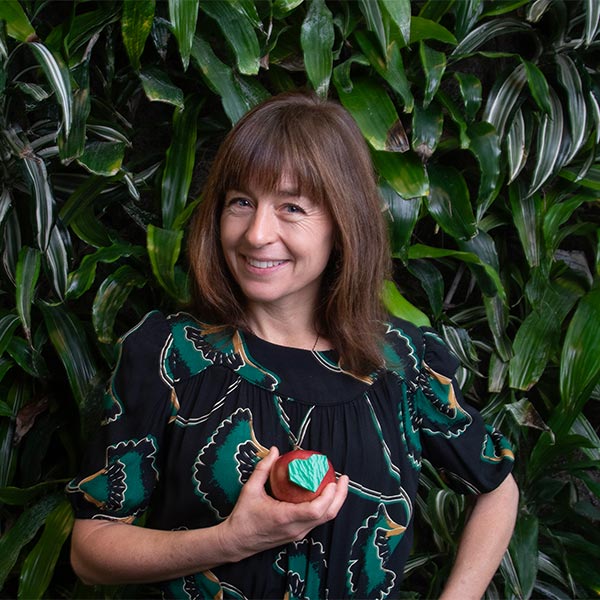Anika Sawni, BA&Sc’19, co-founder of non-alcoholic adult beverage business Grüvi, has much to raise a glass to.
Her company’s lager Grüvi Golden snagged first prize for Best Non-Alcoholic Beer in the World at the 2022 World Beer Cup. Then weeks later, Grüvi’s non-alcoholic sangria and dry red wine blend won medals at the 2022 International Wine and Spirit Competition.
And as Grüvi has been receiving these accolades, Canadians have been given cause to think more deeply about the appeal of non-alcoholic drinks.
In January (having the decency to wait until after New Year’s Eve) the Canadian Centre on Substance Use and Addiction made public the sobering revision of their alcohol consumption recommendations. Swilling more than two drinks a week is now judged to carry a health risk, whereas the 2011 guide had proposed that 15 drinks in a week for men and 10 for women would probably be okay.
Sawni wasn’t surprised by the updated regulations – evidence of links between alcohol and cancer have been around for years – but she was surprised that so many Canadians were caught off-guard. But no wonder. Alcohol is normalized and promoted in our culture, playing a part in unwinding at the day’s end, Sunday football and genteel brunches.
Sawni is certainly sympathetic to those alarmed by the news. “Going from 15 drinks to two drinks a week, that’s 13 moments of celebration that someone was drinking beer or wine and now they’re being told they shouldn’t.”
She recalls attending gatherings as a student in which the options were exciting cocktails or hipster wine or … fizzy water? Maybe with a lime wedge? She’d choose the alcoholic drink because it was, y’know, fun. But the next day, she’d lament the hangover and the inability to properly focus on her neuroscience studies. In class, she’d learn about the effects of alcohol on the brain, and then out of class witness regrettable booze-related decisions among peers and see them miss or mess up exams because of night-before indulgences.
Could she have it all? Chill with friends, be excited about her drinks, and not be functionally compromised? Her brother Niki had similar concerns. He’d hew to healthy habits during the week and feel bad about blowing them over the weekend. She approached him with the idea that led to Grüvi.
Niki’s business background nicely complements her knack for marketing and brand building. Their entrepreneur CPA dad and customer-relations-and-HR expert mum came out of retirement to lend a hand.
Grüvi isn’t really intended for teetotalers, nor does it strictly target those whose drinking habits hover somewhere between “European” and “alcoholic.” About 70 percent of the company’s devotees regularly drink alcohol. They might want to cut back on their alcohol consumption, but they are looking for a similar experience.
Grüvi offers a range of products. Niki is a craft beer kind of guy, Anika is more of a wine drinker. “Sometimes I want a cocktail, sometimes I want a whiskey, sometimes I want a wine,” she says. “It’s the same for the non-alc category. A nitro stout lover may not drink rosé, but some like both.” Also, Sawni would rather eat her calories than drink them, so their beverages are not calorie-laden bloat monsters. Instead, you can save your energy intake for cream puffs.
The pressures and uncertainty associated with the pandemic saw a rise in alcohol consumption. Sawni believes things are at a turning point now, with many people reconsidering that increase in drinking. “[It] allowed people to reflect internally and come back to what’s core to them; what are their values and what kind of life do they want to be living?” The unsustainable overindulgence at the beginning of the pandemic is giving way to the search for healthier directions, she believes.
The non-alcoholic field is booming; bars and restaurants recognize the need to offer those options. “Generation Z is leading a lot of the movement with awareness for self-care and mental health,” Sawni says. Grüvi is now available in 3,500 locations across Canada and distributed at Sobeys. They’ve seen a 400 per cent growth this past year, a far pour from when they started up three years ago. While an increasing number of non-alcoholic drinks are becoming available, Grüvi benefits from having worked out the wrinkles and calling an early dibs on the market.
The two conventional ways of making non-alcoholic drinks is to stop fermentation or remove the alcohol with high heat. Sawni teamed up with a Denver-based brewer that filters out the alcohol of an already partly fermented beer and then finishes up with a full fermentation. This lengthy process yields a taste much like conventional brews. Sawni admits that red wine is trickier because of the complexity of flavour, but Grüvi has had great success with its sangria and prosecco.
Grüvi beverages continue to become more widely available. A recent deal will soon see five Grüvi products being sold at Loblaws. A Toronto native, Sawni says it is exciting to see Grüvi drinks offered at some of the city’s trendiest restaurants, like Bar Raval, Mira Mira and Richmond Station (where the photo at the top of this story was taken).
“You can still kick your feet up at the end of the day,” says Sawni, “but you don’t have to worry about the negative effects of alcohol that come with that.”


